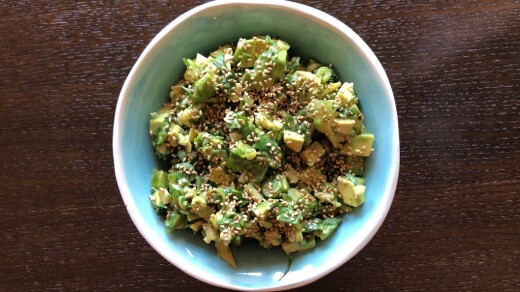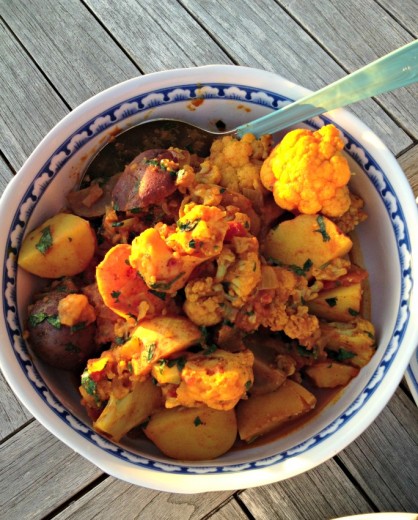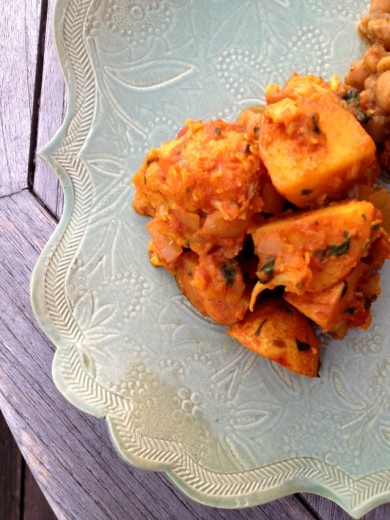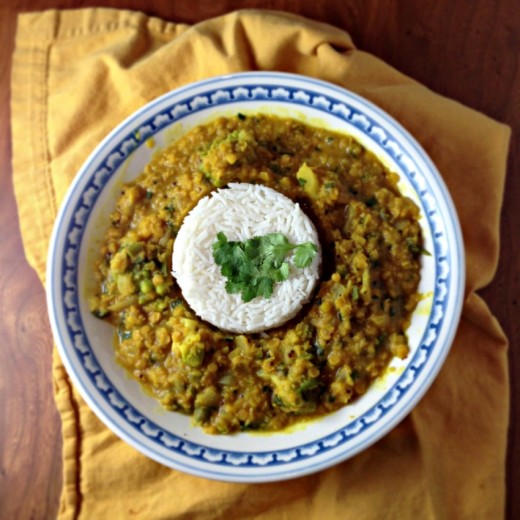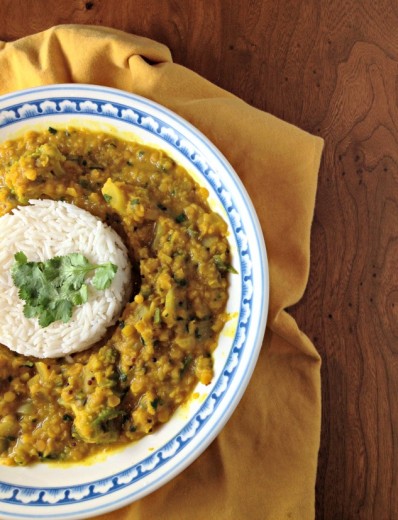
Yes it’s me, your long lost vegetarian food blogger. A year after I told you I was coming back to this space, I’m really back. For real. I had every intention of making this a more regular thing but I got stopped by technology. I started this blog way back in May of 2008. About a year after I started, I worked with a designer to move me over to WordPress and redesign the site. And that’s the last time anything was updated. I don’t really care that the site looks dated, but using a very old version of WordPress left me banging my head against a wall. Because I am intimidated by the tech aspect of the blog, I just put it off. I’ve had this post ready to go for months but couldn’t go anywhere with it. I finally reached out to my friend network and someone suggested I post the job on Fiverr. A few days and a little bit of money later, I’m back!
Now before I get to the tofu, I have to simultaneously apologize to and profusely thank those of you who left me such lovely comments on this post. I was operating under the impression that no one really reads this blog anymore so I hadn’t bothered to check the comments. In fact, that is not the case. I am humbled by your welcomes back to this space and by your sharing your own difficult experiences with mental illness. I have always been so grateful by the support of friends and strangers when I talk about the tough stuff here. Thank you all so much for reading and supporting. There is nothing more motivating than having wonderful readers.
Onward. I’ve noticed that every time I post something about tofu on Instagram, I get questions. Tofu, it seems, is not only a polarizing ingredient but also a perplexing one. I’ve been cooking with it for well over 25 years and while I’m not an expert, I do have some Thoughts and Opinions, as well as a favorite way to prepare it. I just read over my old tofu posts (some great recipes there!) and I have addressed most of these points in previous posts, but here are all my thoughts in one convenient place:
Tofu is not a meat substitute. If you are looking to reduce your meat intake but also are looking for something to replace your steak or roast chicken, tofu is not your guy. Tofu, while it can be delicious if treated the right way and nutritious, is not going to satisfy you if you want animal protein. Treat tofu as its own unique thing and you will be more likely to accept and like it.
Always, always extra firm. If you have gone looking for our soy friend and been overwhelmed by the choices, I can totally understand. Silken, soft, medium, firm, extra firm, super firm, water packed, vacuum packed – did I miss any? I occasionally buy silken tofu (the type that is shelf-stable and found on the Asian foods aisle) for using in miso soup or blending into desserts, but otherwise I always go extra-firm or super firm. If possible, I also try to get the type that is shrink wrapped and NOT packed in water. One of the keys to getting flavor into tofu is to remove excess water (more on that in a minute), so you have to work harder at this task if the whole block is sitting in water. Wildwood makes a good one they label as super firm and if you are in the Bay Area, Hodo Tofu is made right here in Oakland and has a great texture. Trader Joe’s also has a good one.
Get rid of excess water but don’t make yourself crazy. Many tofu recipes will tell you to “press” the tofu. This involves laying it on a towel, placing a baking sheet over it, and then placing heavy cans on top for 20-30 minutes. The idea is that you are pressing out the excess water which will allow the tofu to absorb more flavor and have better texture. I agree with the end goals but in my experience, this is a time-consuming and unnecessary step. If your tofu is too soft, it will sploosh apart under the weight and if it is extra-firm, it will just sit there and not really give off any water. Your best bet is to lay the whole block on a clean kitchen towel and aggressively blot the outer edges dry. You can even give it a bit of a squeeze. Then, slice the tofu into planks and dry each of those, both sides, with the same towel. Then you are good to go!
Flavor, flavor, flavor. One of the biggest complaints I hear about tofu is that it doesn’t taste like anything. (The other one is that it is mushy, which you can solve by buying extra firm.) That complaint is pretty much true – tofu on its own doesn’t have much flavor. But, if I remember correctly, neither do chicken breasts. You do things to chicken to make it taste better, like season and/or marinate it, and so you should do the same with tofu. If you are simply stir frying it and adding it to another dish, be sure to season it well with salt and pepper before sautéing and even give it another sprinkle of salt after it is done. But to get even better flavor (and texture) consider marinating and baking the tofu. I think Asian profile flavors taste best so I lean toward ingredients like soy sauce, rice wine vinegar, and chile paste. But you could certainly explore other options.
High heat is your friend. To get great texture, you need to work with relative high heat and give it a bit of your attention. If I am adding tofu to a stir fry or fried rice, I will stick with the season and then pan fry method I describe below. Frying it will tighten it up a bit and give you a bit of a crust. Do not expect fried chicken level of crunch but the texture is nice. If the tofu is more of the star of the show, I marinate it for at least an hour, even longer if possible. Then I bake it in the marinade in a 400 degree oven until the marinade has been absorbed. Below you will find specifics on how to cook/bake the tofu. I’m giving you a yield of 16-20 ounces because the Wildwood and Trader Joe’s super firm comes in a 16-ounce pack. If you can find Hodo brand, it (annoyingly) comes in 10-ounce packs, so I buy two.
Pan-Fried Tofu
16-20 ounces of tofu
You will notice that I have you sautéing the tofu in slabs first, then cutting into cubes once they are golden brown. There are few tasks I find more mind-numbing than turning individual cubes of tofu over four times but if that sounds like fun to you, cut each slab into cubes before frying. Just don’t forget to season with salt and pepper.
Remove the plastic packaging from the tofu and using a clean kitchen towel (or paper towels), blot the brick(s) dry. Cut the brick(s) into approximately 1-inch thick slabs and blot each slab dry on both sides. You can give them a gentle squeeze too. Lay out on a plate and sprinkle both sides with a generous pinch of kosher salt and a few grinds of black pepper.
Place a large non-stick sauté pan over medium high heat. Drizzle in a couple of tablespoons of a flavorless oil (canola or grapeseed are my choices) and carefully lay the slabs of tofu in the pan. They will tend to splatter a bit so watch your hands. Allow the slabs to cook until they are a uniform golden brown, then carefully flip them over using tongs or a spatula. Allow the second side to get golden brown. If you are able to stand the slabs up on their ends without them falling over, allow those to get golden brown too. If that doesn’t work for you, don’t worry about it. Once you have golden brown tofu, remove the slabs to a paper towel lined plate. If you were not able to cook all the tofu in one batch, repeat these instructions with the rest of the tofu. Sprinkle all the slabs with another pinch of kosher salt.
Once the slabs are cool enough to handle, cut them each into the desired sized cubes.
Oven-Baked Tofu
16-20 ounces of tofu
1 package Wildwood Super Firm Tofu or two packages Hodo Extra Firm Tofu
3 tbsp. soy sauce
Juice of 1 lime
1 tbsp. unseasoned rice wine vinegar
2 tbsp. honey or brown sugar
1 tbsp. dark sesame oil
1 tbsp. canola oil
1 tsp. salem olek or other chili paste (optional)
Preheat the oven to 400 degrees with the rack in the middle position. Remove the plastic packaging from the tofu and using a clean kitchen towel (or paper towels), blot the brick(s) dry. Cut the brick(s) into approximately 1-inch thick slabs and blot each slab dry on both sides. You can give them a gentle squeeze too. Cut the slabs of tofu into approximately one-inch cubes.
In a large baking dish, whisk together all the marinade ingredients. Taste and make sure the balance is right. You want a nice salty/sweet/sour flavor but adjust until it tastes right to you. Tumble the tofu cubes into the dish and stir to combine well. Allow the tofu to sit out, stirring occasionally, for ideally 30-60 minutes. The flavor gets better the longer it sits so you can also prepare this early in the day. If it is going to sit out longer than an hour, cover the dish and place in the refrigerator. Stir occasionally.
Place the uncovered dish in the oven and bake, stirring every 10 minutes or so, until the marinade is completely absorbed and the tofu is getting crispy, about 35-40 minutes.

 Share
Share